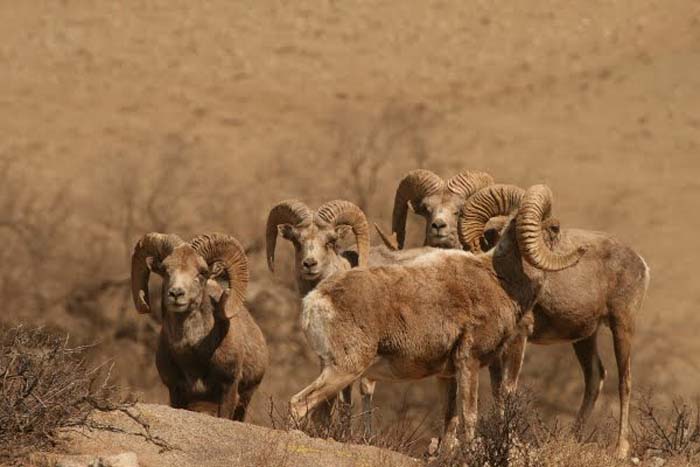Argali facts
Posted in Wildlife A-Z | February 8, 2011 | Comment NowConsidered as the largest of the wild sheep, Argali is the mammal of the Central Asia highlands. Its look is somewhat similar to the zodiac sun sign of Aries. The term ‘Argali’ is derived from the Mongolian name that means ‘ram’. Coming to its physical description, Argali is a multi-color sheep whose shades range from buff to grey-brown including the in-between white seen especially in the older sheep. These sheep are extensively hunted for their highly priced horns as well as meat both of which play a role in making the traditional Chinese medicine. However, the horns are also used in producing trophies. This is one of the responsible Argali facts that have posed a serious threat to these sheep irrespective of their range. In fact, a few of their subspecies are totally on the verge of extinction making the situation worse for them. Perhaps one more reason behind their extinction is the fact of bringing more and more land under cultivation along with extensive loss of their habitats. Listed below are some more Argali facts.
- Physical features: All species boast a different appearance. But, usually, an argali possesses a light brown coat, white legs, and a white patch on its rump. As compared to the females, the males tend to have larger as well as relatively appealing horns whose length can reach up to 13% of their total mass of the body. Setting off their stunning look is also a white hair patch flanking the neck as well as a unique crest along their back. Featuring corkscrew horns bending at the front, a mature male can bear a corkscrew horn of up to 20 to 22 kg. The weight of the sheep can range from 130 pounds to 350 pounds, while the height can be anywhere from 3 to 4 feet.
- Unique Physical Ability: An Argali, by blowing air via the nostrils, can produce a warning hiss as well as an alarming whistle.
- Habitat: Argali is mostly seen today in Central Asia and that too at an altitude of 1300 meters and over. However, their subspecies are only seen in the different zones – Ovis Ammon Severtzovi in the west of Uzbekistan and the Altai Argali is in east of Mongolia. Mostly, you can spot them in the highly elevated mountainous regions that feature dry alpine habitats. Argalis are very sociable and settle in single-gender clusters each ranging from 2 to 100 members.
- Reproduction: One of the most unique Argali facts is that just at the start of the mating season, a violent competition takes place among the males to obtain the friendliest female. This contest is so hostile that their clashing horns’ sounds echoes in the mountains. Overall, the gestation period is 5 months after which the female becomes the mother of one or two lambs. To give birth, the female argali tends to go away from the male herd. At birth, the young one weighs seven to eight pounds, which is the same as the human infants. Once the birth has occurred, these infants veil themselves in the soaring grasses and the mother feeds them.
- Life Span: 10 to 17 years.
- Food: The Argalis are purely herbivorous as they only feed on grass, sedges, and herbs. In summer when these greens turn out to be dry, Argalis are forced to migrate in search of food to the higher elevations.
- Migration: Mostly males migrate seasonally so that they can survive in summer, especially to be on the higher elevations. The Argalis tend to have long legs due to which they can roam speedily from one location to another. This is also the main reason as to why they flee quickly from the predators in the jagged zones of the mountains.
- Current Number of Species: 9 – Altai argali, Tibetan argali, Kara Tau argali, North China argali, Severtzov argali, Karaganda argali, Gobi argali, Tian Shan argali, and Marco Polo argali.




 Save to delicious
Save to delicious Stumble it
Stumble it